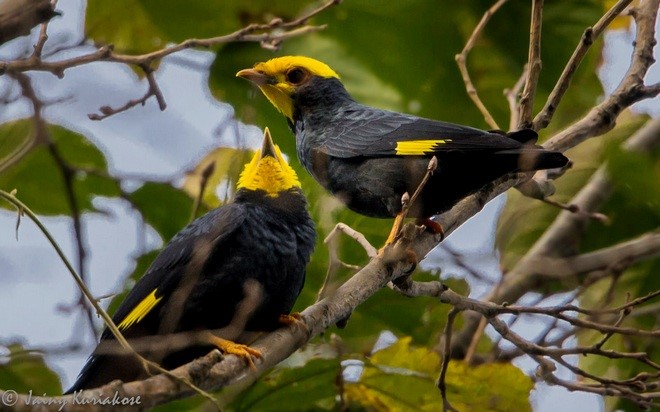Birdfinding.info ⇒ Sparsely distributed across most of its range, but locally common in a few areas. Consistent sites include Namdapha National Park in Arunachal Pradesh, Cat Tien National Park in Vietnam, and Khao Kheow, Khao Yai, and Kaeng Krachan National Park in central Thailand. Often perches on bare branches high in forest canopy in the same manner as many New World cotingas.
Golden-crested Myna
Ampeliceps coronatus
Humid forests of Southeast Asia.
From the Himalayan foothills of eastern India (west to West Bengal), northern Myanmar, southwestern Yunnan, and northern Vietnam south to peninsular Thailand (to Krabi) and southern Vietnam.
Not restricted to intact forests, and apparently somewhat nomadic. Sometimes occurs in isolated trees in semiopen landscapes.
Identification
A plump, medium-sized, black myna with bare pink orbital skin, variable amounts of yellow on the crown and throat, and yellow-and-white wing-patches at the base of the primaries.
Adult male has entirely yellow crown and extensively yellow throat.
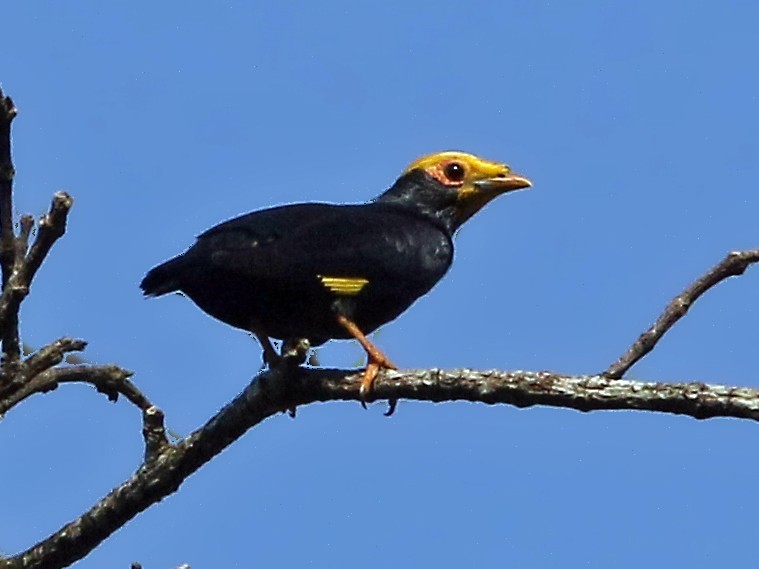
Golden-crested Myna, male. (Kaeng Krachan National Park, Thailand; March 2, 2019.) © Christoph Moning
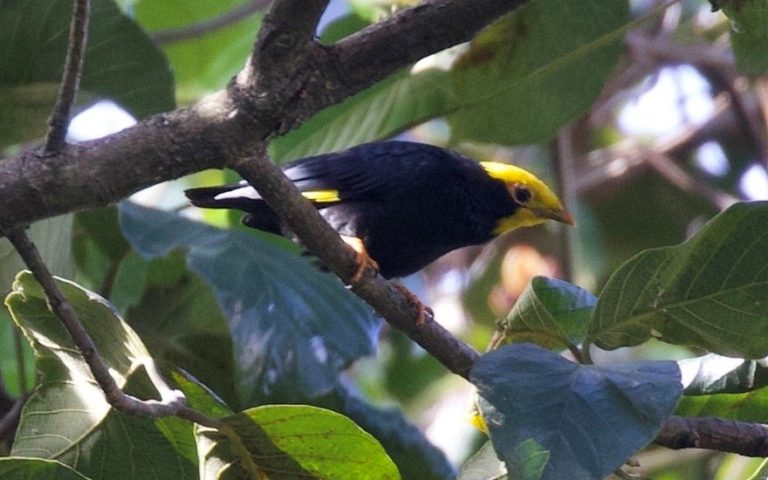
Golden-crested Myna, male. (Miao, Changlang, Arunachal Pradesh, India; December 27, 2018.) © karoconniff

Golden-crested Myna, male. (Cat Tien National Park, Vietnam; March 24, 2016.) © Niall D. Perrins
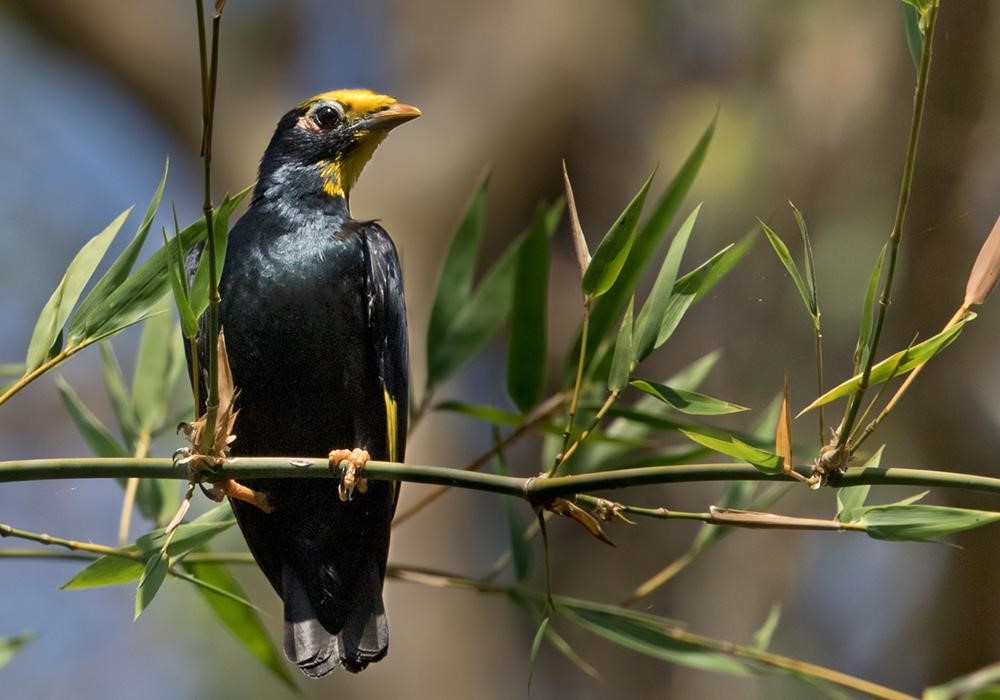
Golden-crested Myna, male. (Cat Tien National Park, Vietnam; February 27, 2018.) © Lars Petersson
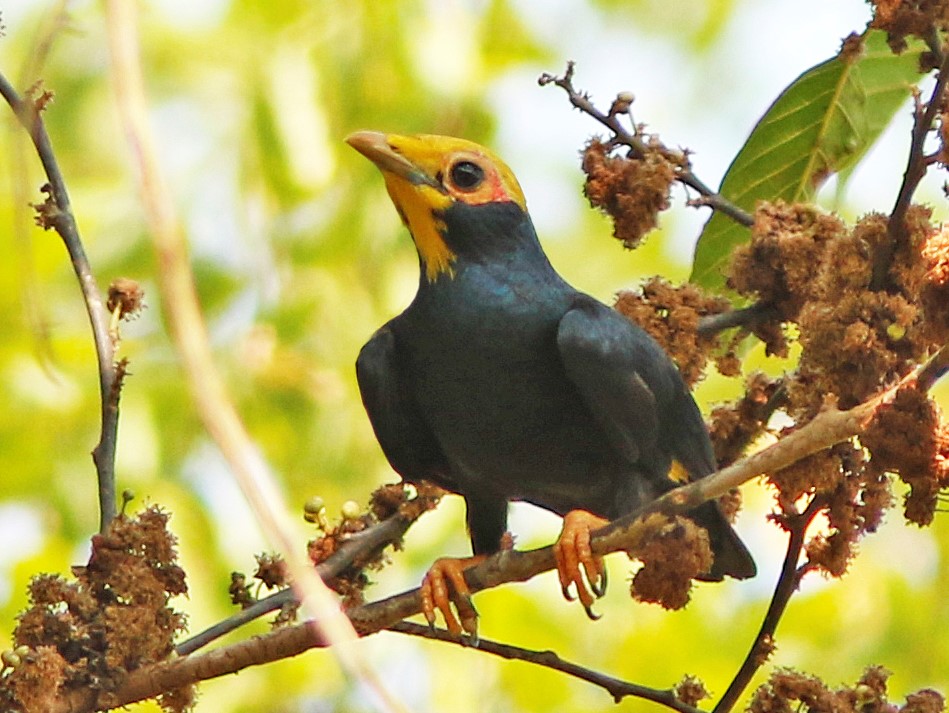
Golden-crested Myna, male. (Cat Tien National Park, Vietnam; February 21, 2016.) © David Beadle
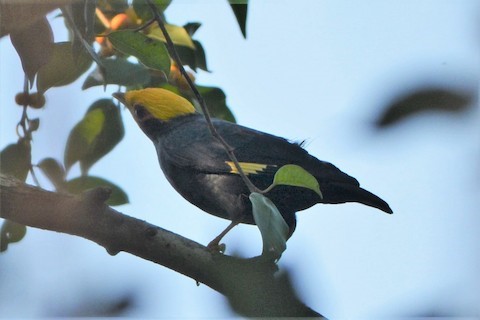
Golden-crested Myna, male showing golden crown. (Kaeng Krachan National Park, Thailand; February 26, 2016.) © David Hollie

Golden-crested Myna, male. (Kaeng Krachan National Park, Thailand; February 20, 2008.) © Mike Gillam

Golden-crested Myna, male and immature—note lack of bare pink eyering. (Namdapha National Park, Arunachal Pradesh, India; December 9, 2017.) © Jainy Kuriakose
Females and immature males have more limited yellow on the crown and throat, so their heads may appear mostly black. Adult females have a wide pink eyering, which immatures apparently lack.

Golden-crested Myna, female. (Kaeng Krachan National Park, Thailand; February 26, 2016.) © David Hollie
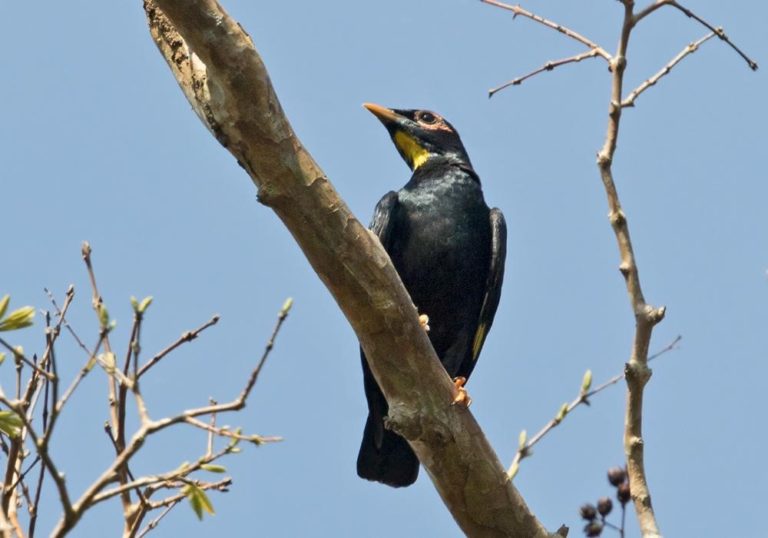
Golden-crested Myna, female. (Cat Tien National Park, Vietnam; February 27, 2018.) © Lars Petersson
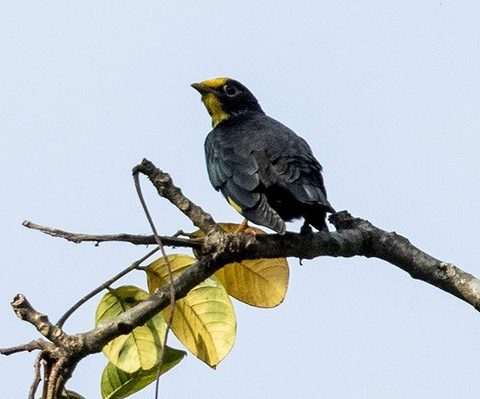
Golden-crested Myna, immature—note lack of bare pink eyering. (Namdapha National Park, Arunachal Pradesh, India; November 9, 2019.) © Solomon Sampath Kumar

Golden-crested Mynas in flight, showing shape and position of the yellow-and-white wing-patches. (Cat Tien National Park, Vietnam; December 9, 2018.) © Doug Gochfeld
Notes
Monotypic species.
References
BirdLife International. 2017. Ampeliceps coronatus (amended version of 2016 assessment). The IUCN Red List of Threatened Species 2017: e.T22710949A111064635. https://dx.doi.org/10.2305/IUCN.UK.2017-1.RLTS.T22710949A111064635.en. (Accessed April 29, 2020.)
Craig, A., and C. Feare. 2020. Golden-crested Myna (Ampeliceps coronatus). In Handbook of the Birds of the World Alive (J. del Hoyo, A. Elliott, J. Sargatal, D.A. Christie, and E. de Juana, eds.). Lynx Edicions, Barcelona. https://www.hbw.com/node/60822. (Accessed April 29, 2020.)
eBird. 2020. eBird: An online database of bird distribution and abundance. Cornell Lab of Ornithology, Ithaca, N.Y. http://www.ebird.org. (Accessed April 29, 2020.)
Feare, C., A. Craig, B. Croucher, C. Shields, and K. Komolphalin. 1999. Starlings and Mynas. Princeton University Press, Princeton, N.J.
Robson, C. 2002. Birds of Thailand. Princeton University Press, Princeton, N.J.
Xeno-Canto. 2020. Golden-crested Myna – Ampeliceps coronatus. https://www.xeno-canto.org/species/Ampeliceps-coronatus. (Accessed April 29, 2020.)
